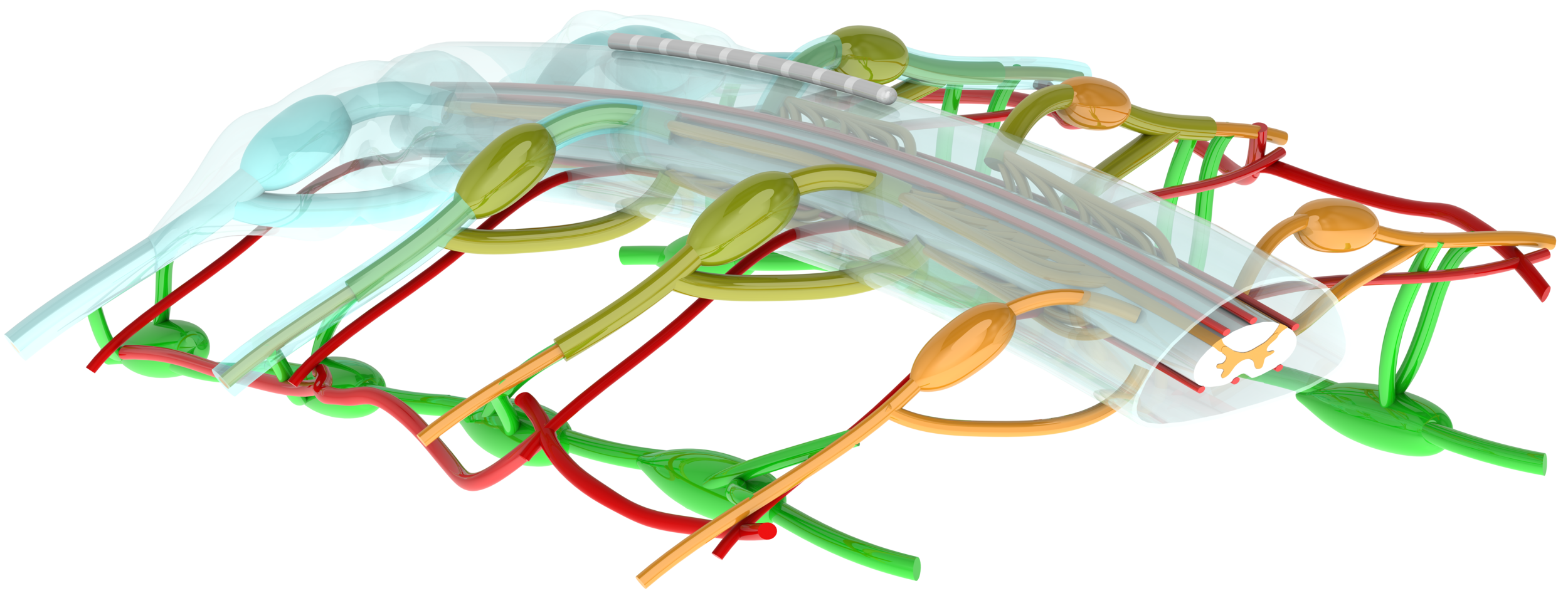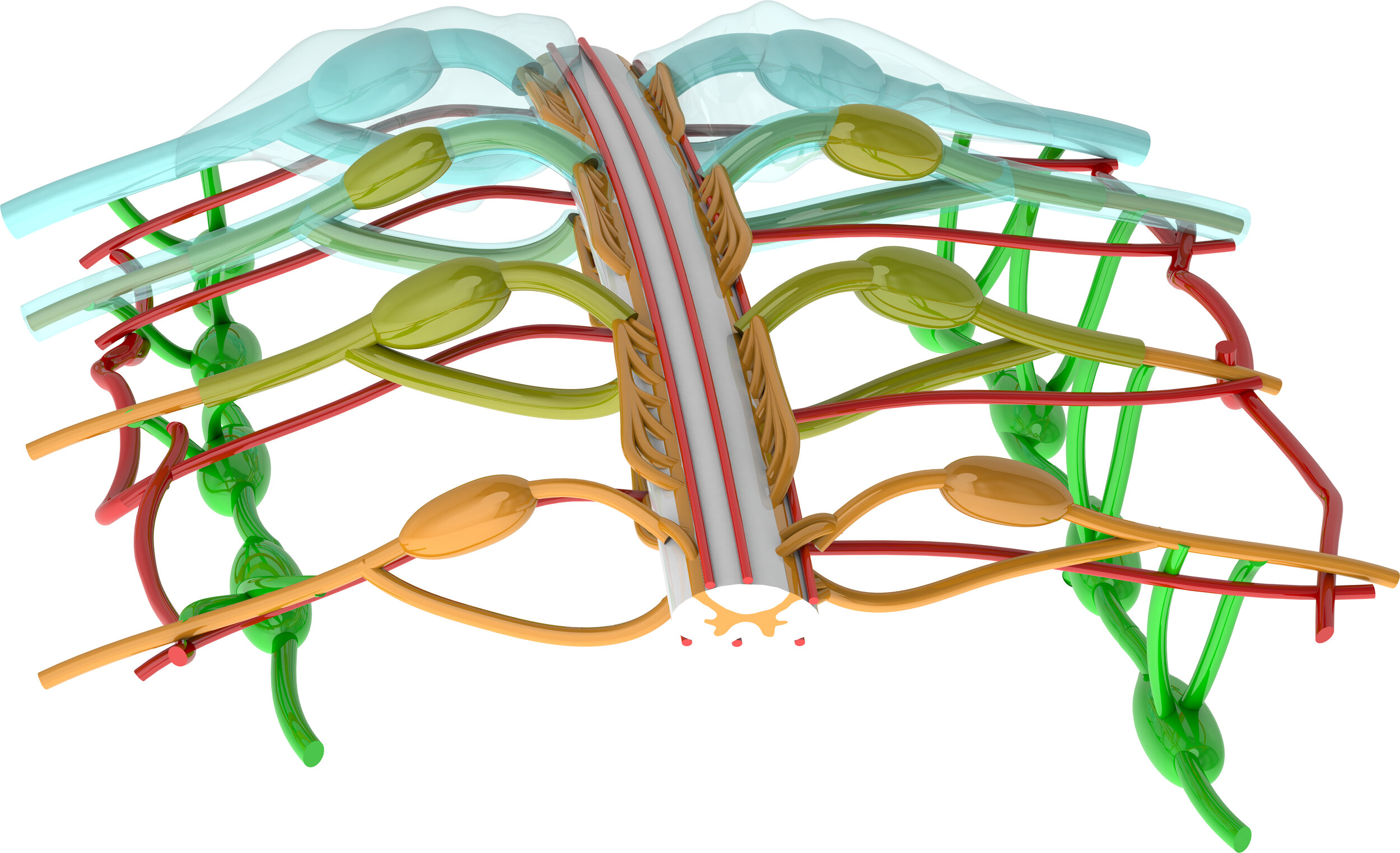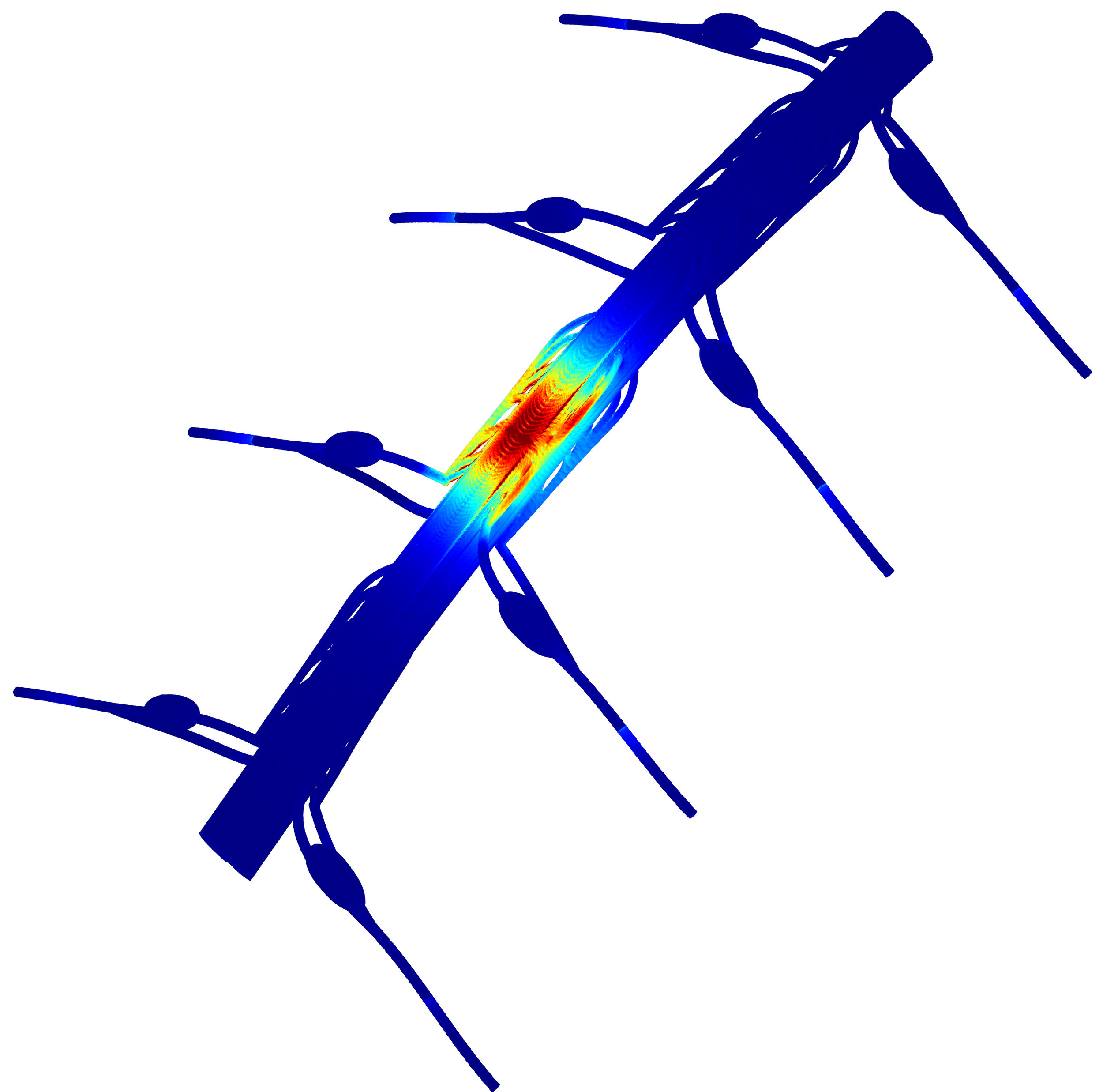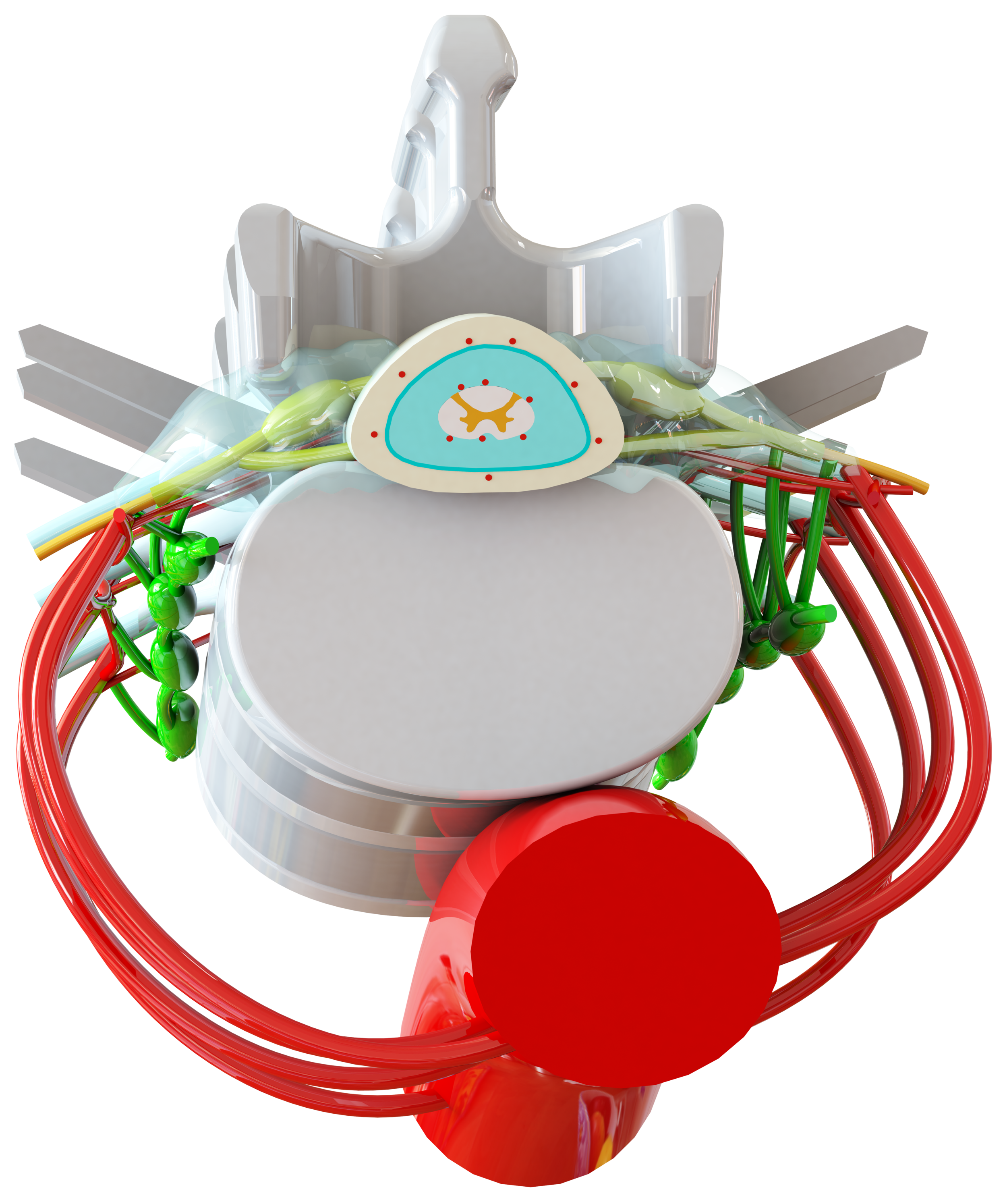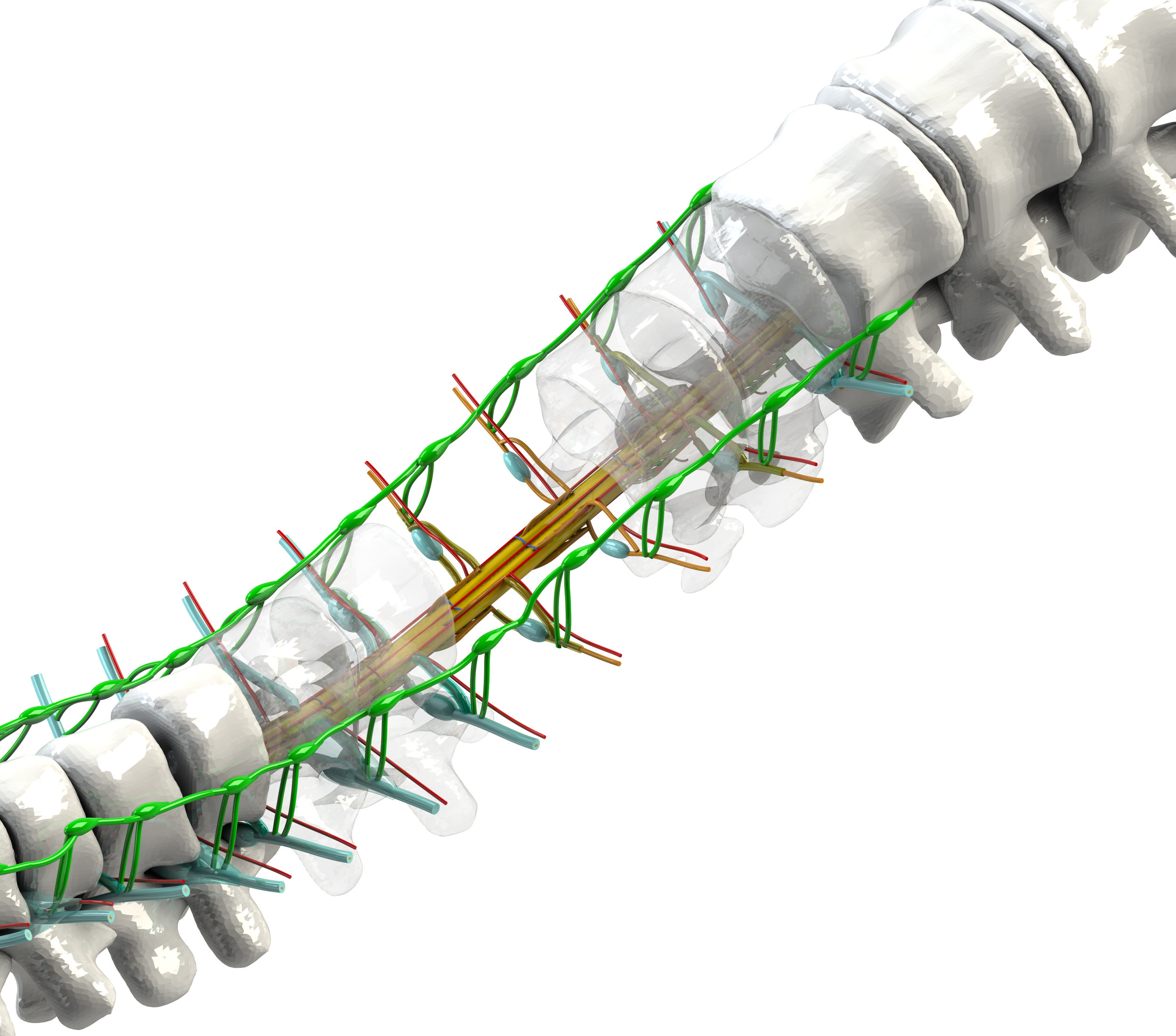Realistic Anatomically Detailed Open-source Spinal Cord Stimulation Model (RADO-SCS)
Introduction
RADO-SCS model is the first open source spinal cord model for simulating conventional/High Frequency Spinal Cord Stimulation, Dorsal Root Ganglion (DRG) Stimulation, and transpinal Direct Current Stimulation (tsDCS). The RADO-SCS model emerged over years. In our very first version of the SCS model, RADO-SCS 1.0, cylindrical shapes were used to represent the spinal tissues which later got upgraded with an extensive research and modeling works to RADO-SCS 2.0. This version included detailed spinal tissues anatomy but the spinal roots, rootlets, sympathetic chain, DRG, and vasculatures were not included in that model.
RADO-SCS 3.0 captures the complex and sub-millimeter dimensions at high resolution (0.1 mm) with all the details that were not captured by previous model. This is an open-source SCS model developed from computer aided design (CAD) software (SolidWorks). In this version, we have included STL files of detailed spinal tissue anatomy and two types of clinical SCS leads (Boston Scientific and Nevro). The positioning of the SCS leads can be changed based on the intervention of clinical need. In the upcoming version we will be including DRG leads as well to allow users to use this model to simulate DRG stimulation.The .STL files can be imported into multi-physics software such as COMSOL, Mimics, Abaqus to computationally solve and predict the current flow. The predicted voltages can later be applied into the axon model to estimate the fiber activation threshold.
This work has been conducted in collaboration with Scott Lempka’s group to provide the SCS, DRG, and tsDCS field with a free state-of-the-art high resolution model for optimizing electrode/lead design and experimental protocol.
Significance of the RADO-SCS model
The RADO-SCS 3.0 can be used to simulate any SCS approach with both unprecedented resolution (precision) and transparency (reproducibility). Compared to prior models, RADO-SCS model meets or exceeds detail for every tissue compartment. The resulting electric fields in white and gray-matter, and axon model activation thresholds are broadly consistent with prior simulations.
Freely available online, the RADO-SCS will be updated continuously with version control. How to Cite
This open-source model is made available based on Creative Commons Attribution 4.0 International (CC BY 4.0) License. Please use the following citation when referring to our open-source model.
Khadka, N., Liu, X., Zander, H., Swami, J., Rogers, E., Lempka, S., Bikson, M., 2020. Realistic anatomically detailed open-source spinal cord stimulation (RADO-SCS) model. J. Neural Eng. https://doi.org/10.1088/1741-2552/ab8344
RADO-SCS Terms of Use
RADO-SCS model is protected by Creative Commons Attribution 4.0 International (CC BY 4.0) License. Users must give appropriate credit/cite the source of this model (see above on how to cite us).
Getting started
Before you download the RADO-SCS model for simulation, we suggest to read “forward modeling workflow for current flow models” which will provide detailed help with a general FEM modeling Pipeline using CAD-derived/MRI-derived models. The current flow modeling pipelines have been published many times in our prior publications (link here). When ready, you can download the latest version of the RADO-SCS model ( V 3.0) and use it for your exploratory clinical or academic research.
How to Download
RADO-SCS is an open-source Spinal Column model available online. Click here to download
Technical Walk-through
Modeling Workflow
Fill out the form below to place a download request for the RADO-SCS V 3.0. We will send you a download link for the model.
Download all STL files as they represent realistic and anatomically detailed T9-T11 level spinal tissues, vertebraes, IV discs, soft-tissues, vasculatures, and clinical leads (pre-positioned). If you don’t need all the detailed tissues, you can remove them from your final model.
Import the STLs using either a free or commercial meshing software. We recommend Simpleware or other powerful meshing software because the model has sub-millimeter resolution.
After the model is meshed, import the model into finite element method (FEM) or finite element analysis (FEA) current flow simulating software such as COMSOL, Abaqus, Mimics, etc.
If interested in fiber activation thresholds simulation, export the extracellular voltages calculated from the FEM model and couple it into the NEURON/ Matlab modeling platform.
Additional References
Khadka N., Wang B, Bikson M. Frequency-dependent and capacitive tissue electrical properties in spinal cord stimulation models. bioRxiv [Preprint]. 2024 Nov 25:2024.11.22.624883. doi: 10.1101/2024.11.22.624883 (RADO-SCS 3.0)
Khadka N., Liu X., Zander H., Swami J., Rogers E., Lempka S F., Bikson M., 2019. Realistic Anatomically Detailed Open-Source Spinal Cord Stimulation (RADO-SCS) Model. bioRxiv 857946. doi: https://doi.org/10.1101/857946 (RADO-SCS 3.0)
Khadka, N., Zannou, A., Truong, D., Zhang, T., Esteller, R., Hersey, B., Bikson, M., 2019. Generation 2 kilohertz spinal cord stimulation (kHz-SCS) bioheat multi-physics model. Brain Stimulation: Basic, Translational, and Clinical Research in Neuromodulation 12, 566. https://doi.org/10.1016/j.brs.2018.12.876 (RADO-SCS 2.0)
Zannou, A.L., Khadka, N., FallahRad, M., Truong, D.Q., Kopell, B.H., Bikson, M., 2019a. Tissue Temperature Increases by a 10 kHz Spinal Cord Stimulation System: Phantom and Bioheat Model. Neuromodulation. https://doi.org/10.1111/ner.12980 (RADO-SCS 2.0)
Zannou, A.L.*, Khadka, N.*, Truong, D.Q., Zhang, T., Esteller, R., Hershey, B., Bikson, M., 2019b. Temperature increases by kilohertz frequency spinal cord stimulation. Brain Stimul 12, 62–72. https://doi.org/10.1016/j.brs.2018.10.007 (RADO-SCS 1.0)
Notes and Disclaimers
Version 3.0 is the most updated version of the RADO-SCS model.
RADO-SCS does not include a pathological human spinal cord, but there are plans to incorporate this in future versions.
This open-source model only includes CAD derived model files with pre-positioned SCS leads. However, the users can change the lead position using commercial or open-source CAD-software as their need.
RADO-SCS is not a modeling open-source software. It is a CAD-derived model of realistic human spinal anatomy which can be downloaded and simulated for educational, clinical, or exploratory purposes. See the modeling pipeline on how to use the open-source RADO-SCS for numerical simulation.
There is a plan to develop an open-source current flow modeling platform using the most-updated version of the RADO-SCS model in future.
Contact Us
For questions regarding downloading or using RADO-SCS 3.0 for simulation, fill out the form below.Last update: April 2, 2025, Niranjan Khadka and Marom Bikson